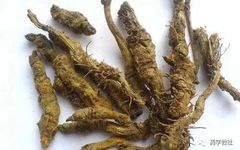This product is the dried rhizome of the Ranunculaceae plant Huanglian (Coptis chinensis Franch.), Sanjiao Ye Huanglian (Coptis deltoidea C.Y.Cheng et Hsiao), or Yunlian (Coptis teeta Wall.). The three types are commonly referred to as “Weilian,” “Yalian,” and “Yunlian.” Harvested in autumn, the roots are cleaned of fibrous roots and soil, dried, and any remaining fibrous roots are removed.
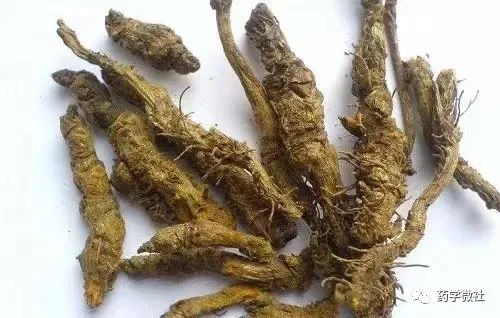
【Characteristics】Weilian is often clustered, usually bent, resembling a chicken’s claw, with a single rhizome length of 3-6 cm and a diameter of 0.3-0.8 cm. The surface is grayish-yellow or yellow-brown, rough, with irregular nodular protrusions, fibrous roots, and remnants of fibrous roots. Some nodes have a smooth surface like a stem, commonly referred to as “crossing the bridge.” The upper part often retains brown scales, and the tip usually has remnants of the stem or petiole. The texture is hard, with an uneven cross-section; the bark is orange-red or dark brown, and the wood is bright yellow or orange-yellow, arranged radially, with some hollow pith. The aroma is faint, and the taste is extremely bitter.
Yalian is mostly single-stemmed, slightly cylindrical, slightly bent, 4-8 cm long, and 0.5-1 cm in diameter. The “crossing the bridge” part is longer. The tip has a small amount of residual stem.
Yunlian is bent in a hook shape, mostly single-stemmed, and relatively small.
【Identification】(1) Cross-section of the product: Weilian has a cork layer consisting of several rows of cells, with an epidermis that often falls off. The cortex is relatively wide, with stone cells scattered individually or in groups. The central sheath fibers are bundled or accompanied by a few stone cells, all appearing yellow. The vascular bundles are outerly fibrous and arranged in a ring. The wood is yellow, fully lignified, and the wood fibers are well developed. The pith consists of thin-walled cells, with no stone cells.
Yalian has stone cells in the pith.
Yunlian has no stone cells in the cortex, central sheath, or pith.
(2) Take 0.25 g of the product powder, add 25 ml of methanol, sonicate for 30 minutes, filter, and take the filtrate as the test solution. Take 0.25 g of Huanglian reference material and prepare the reference material solution in the same way. Then take a berberine hydrochloride reference substance, prepare a solution containing 0.5 mg per 1 ml with methanol, as the reference solution. Perform thin-layer chromatography (General Rule 0502) test, applying 1 μl of each of the three solutions on the same high-performance silica gel G thin-layer plate, using hexane-ethyl acetate-isopropanol-methanol-water-triethylamine (3:3.5:1:1.5:0.5:1) as the developing agent, placing it in a pre-saturated developing chamber with concentrated ammonia solution for 20 minutes, developing, removing, drying, and inspecting under ultraviolet light (365 nm). In the test solution chromatogram, there should be more than four identical colored fluorescent spots at the corresponding positions of the reference material chromatogram; the reference solution chromatogram should show the same colored fluorescent spots at the corresponding positions.
【Inspection】Moisture content must not exceed 14.0% (General Rule 0832, Method 2).
Total ash content must not exceed 5.0% (General Rule 2302).
【Extractives】Determined by the method for determining alcohol-soluble extractives (General Rule 2201) using hot extraction, with diluted ethanol as the solvent, must not be less than 15.0%.
【Content Determination】Weilian is determined by high-performance liquid chromatography (General Rule 0512).
Chromatographic conditions and system suitability test: using octadecylsilyl-bonded silica as the stationary phase; using acetonitrile-0.05 mol/L potassium dihydrogen phosphate solution (50:50) (adding 0.4 g of dodecyl sulfate sodium to every 100 ml, adjusting the pH to 4.0 with phosphoric acid) as the mobile phase; detection wavelength at 345 nm. The theoretical plate number calculated based on the berberine peak should not be less than 5000.
Preparation of reference solution: Take an appropriate amount of berberine hydrochloride reference substance, accurately weigh, and dissolve in methanol to prepare a solution containing 90.5 μg per 1 ml.
Preparation of test solution: Take about 0.2 g of the product powder (passed through a No. 2 sieve), accurately weigh, place in a stoppered conical flask, accurately add 50 ml of a mixed solution of methanol and hydrochloric acid (100:1), seal tightly, weigh, sonicate (power 250W, frequency 40kHz) for 30 minutes, cool, reweigh, use methanol to make up for the weight loss, shake well, filter, and accurately measure 2 ml of the filtrate into a 10 ml volumetric flask, add methanol to the mark, shake well, filter, and take the filtrate.
Determination method: Accurately inject 10 μl of the reference solution and the test solution into the liquid chromatography system, using the peak area of the berberine hydrochloride reference substance as a reference, calculate the content of berberine, palmatine, coptisine, and berberine using the relative retention time of the chromatographic peaks of the components to be measured against the berberine hydrochloride chromatographic peak.
The peak positions of palmatine, coptisine, berberine, and berberine should have relative retention times within ±5% of the specified values, as shown in the table below:
Based on the dried product, the content of berberine (C20H18ClNO4) must not be less than 5.5%, palmatine (C20H17NO4) must not be less than 0.80%, coptisine (C19H13NO4) must not be less than 1.6%, and berberine (C21H21NO4) must not be less than 1.5%.
Yalian: Based on the dried product, the content of berberine (C20H18ClNO4) must not be less than 4.5%.
Yunlian: Based on the dried product, the content of berberine (C20H18ClNO4) must not be less than 7.0%.
Herbal slices (Weilian)
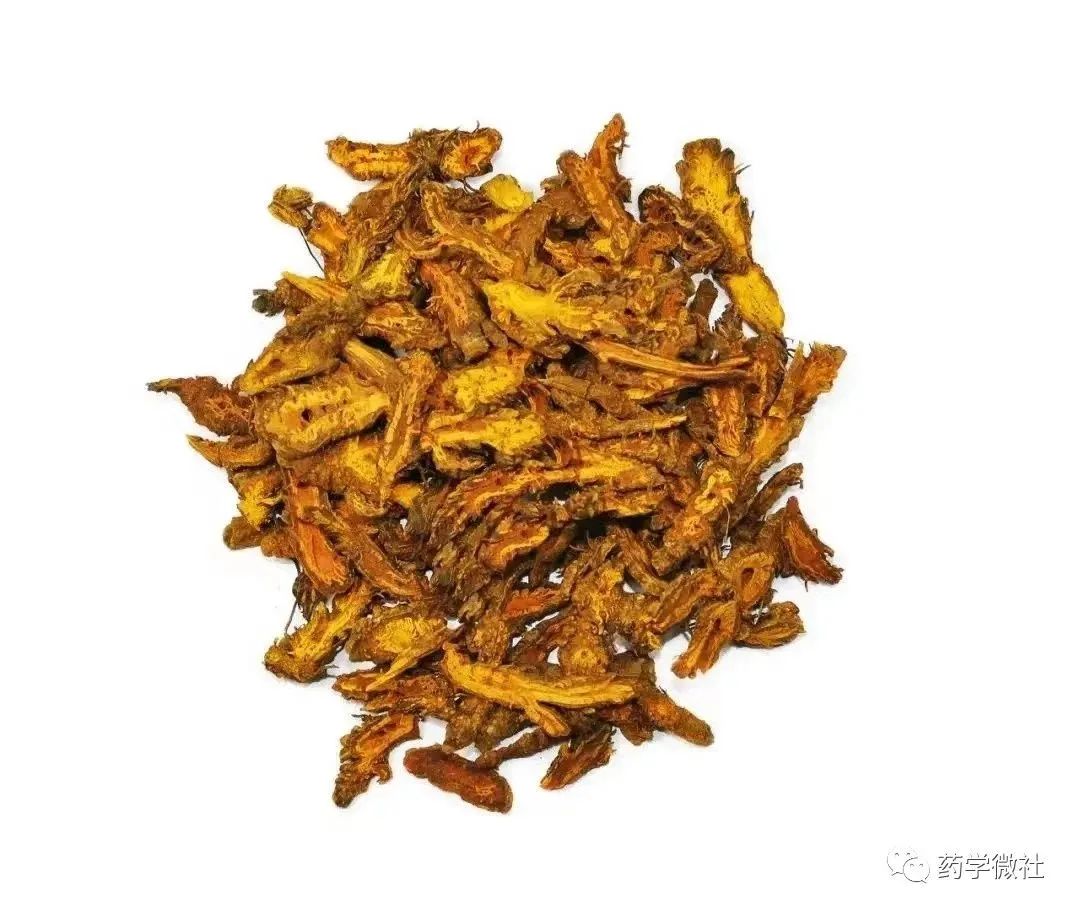
【Processing】Huanglian slices: Remove impurities, soak thoroughly, then cut into thin slices, dry, or crush when used.
【Characteristics】This product appears as irregular thin slices. The outer skin is grayish-yellow or yellow-brown, rough, with small fibrous roots. The cut surface or broken surface is bright yellow or reddish-yellow, with radial texture, faint aroma, and extremely bitter taste.
【Inspection】Moisture content: same as the medicinal material, must not exceed 12.0%. Total ash content: same as the medicinal material, must not exceed 3.5%.
【Content Determination】Same as the medicinal material, with berberine content (C20H17NO4) not less than 5.0%, and the total content of palmatine (C20H17NO4), coptisine (C19H13NO4), and berberine (C21H21NO4) not less than 3.3%.
【Identification】(except for cross-section)
【Extractives】Same as the medicinal material.
Jiu Huanglian: Take clean Huanglian, fry dry according to the wine-frying method (General Rule 0213). For every 100 kg of Huanglian, use 12.5 kg of yellow wine.
【Characteristics】This product resembles Huanglian slices, with a deeper color and a slight wine aroma.
【Identification】【Inspection】【Extractives】【Content Determination】same as Huanglian slices.
Ginger Huanglian: Take clean Huanglian, fry dry according to the ginger juice-frying method (General Rule 0213). For every 100 kg of Huanglian, use 12.5 kg of fresh ginger.
【Characteristics】This product resembles Huanglian slices, with a brownish-yellow surface and a spicy ginger flavor. 【Identification】【Inspection】【Extractives】【Content Determination】same as Huanglian slices.
Yu Huanglian: Take Wu Zhu Yu and an appropriate amount of water, boil, mix the decoction with clean Huanglian, and fry dry after the liquid is absorbed. For every 100 kg of Huanglian, use 10 kg of Wu Zhu Yu.
【Characteristics】This product resembles Huanglian slices, with a brownish-yellow surface and a spicy aroma of Wu Zhu Yu.
【Identification】Take 2 g of the product powder, add 20 ml of chloroform, sonicate for 30 minutes, filter, and treat the residue in the same way twice, combine the filtrate, reduce the solvent under reduced pressure until dry, add 1 ml of chloroform to dissolve, as the test solution. Take 0.5 g of Wu Zhu Yu reference material and prepare the reference material solution in the same way. Then take a limonin reference substance, prepare a solution containing 1 mg per 1 ml with chloroform, as the reference solution. Perform thin-layer chromatography (General Rule 0502) test, applying 6 μl of the test solution, 3 μl of the reference material solution, and 2 μl of the reference solution on the same high-performance silica gel G thin-layer plate, using petroleum ether (60-90℃)-chloroform-acetone-methanol-diethylamine (5:2:2:1:0.2) as the developing agent, pre-saturate for 30 minutes, develop, remove, dry, spray with 2% vanillin-sulfuric acid solution, and heat at 105℃ until the spots are clearly colored. In the test solution chromatogram, there should be the same colored main spots at the corresponding positions of the reference material chromatogram; at the corresponding positions of the reference solution chromatogram, there should be the same colored spots.
【Inspection】【Extractives】【Content Determination】same as Huanglian slices.
【Properties and Channels】Bitter, cold. Enters the Heart, Spleen, Stomach, Liver, Gallbladder, and Large Intestine channels. 【Functions and Indications】Clears heat and dries dampness, drains fire and detoxifies. Used for damp-heat fullness, vomiting with acid regurgitation, dysentery, jaundice, high fever with delirium, excessive heart fire, irritability and insomnia, palpitations, blood heat with vomiting and nosebleeds, red eyes, toothache, thirst, carbuncles, and sores; externally used for eczema, damp sores, and ear discharge. Jiu Huanglian is good for clearing heat from the upper jiao. Used for red eyes and oral ulcers. Ginger Huanglian clears the stomach and stops vomiting. Used for cold-heat counterflow, damp-heat obstruction, fullness, and vomiting. Yu Huanglian soothes the liver and stomach and stops vomiting. Used for liver-stomach disharmony, vomiting with acid regurgitation.
【Dosage】2-5 g. For external use, an appropriate amount.
【Storage】Store in a ventilated and dry place.
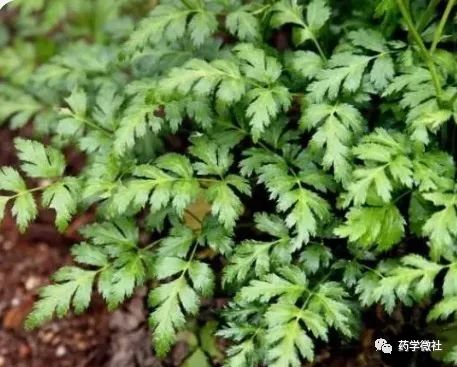
Cultivation and Management
1. Growth Habits
Huanglian prefers to grow in high-altitude, cold environments, thus its growth period is relatively long, generally taking about 6 years to mature. The suitable altitude for its growth is between 1400 meters and 1700 meters, and Huanglian can grow normally at temperatures between 8 degrees Celsius and 34 degrees Celsius. In temperatures below 8 degrees Celsius, Huanglian will enter dormancy.
2. Planting Methods
1. Soil Requirements: Huanglian has high soil requirements and needs to be planted in rich humus, slightly acidic soil, which should be loose and well-drained. Additionally, the selected plot should not have excessive sunlight. Since Huanglian is generally planted in mountainous areas, soil fumigation is necessary before planting. The specific method is to turn the soil 10 cm deep, remove stones, tree branches, and other debris, and mix dry leaves and grass with the surface soil without debris. This is mainly to increase soil fertility and reduce the probability of pests and diseases. After fumigation, turn the soil again to a depth of about 15 cm. Then apply 4 tons of farmyard manure per acre.
2. Sowing: First, we need to understand the dormancy characteristics of Huanglian seeds. Huanglian seeds can break dormancy and ensure germination rate by being placed in moist sand at 4 degrees Celsius for six months. The storage conditions of the seeds greatly affect their quality; dry and room temperature conditions are not favorable for seed storage, and the storage temperature should generally be maintained around 1 degree Celsius with a certain humidity.
If the sowing conditions are met, immediate sowing can be done after harvesting. If the seeds have been stored, they are generally sown in November. During sowing, the seeds should be mixed evenly with screened humus soil and not directly scattered on the soil. After sowing, cover with a layer of fine soil and gently compact. If the climate in the planting area is relatively dry, some straw should be covered to maintain soil moisture.

3. Transplanting: Transplanting should be done during times of low sunlight. It can be done on a sunny day after rain or on a cloudy day. The healthy seedlings should be dug out with roots, trimming the root length by 2 to 3 cm, and then planted at a spacing of 10 cm between rows and 10 cm between plants. It is important to note that seedlings dug out on the same day should ideally be planted the same day. If there are any remaining seedlings, they should be spread out in a cool, moist place. When transplanting the next day, soaking in rooting powder can significantly improve the survival rate of the seedlings.
3. Field Management
1. After transplanting, there will be some dead seedlings, and it is necessary to perform replanting at the appropriate time.
2. During the seedling period, we should perform intertillage and weeding every two months, and after transplanting, we can weed every four months.
3. During the seedling period, after thinning, apply 2 tons of diluted farmyard manure per acre, and in September of autumn, apply 200 kg of cow dung per acre. Two months after transplanting, apply diluted farmyard manure again, and also fertilize in the autumn of the same year and in the spring and autumn of the following year. The amount of fertilizer can be gradually increased each time.
4. Adjusting the closure density: When Huanglian is first transplanted, maintain a closure density of 80%, then reduce it by 10% each year. Throughout the growth process of Huanglian, attention should be paid to adjusting light conditions to ensure normal growth.
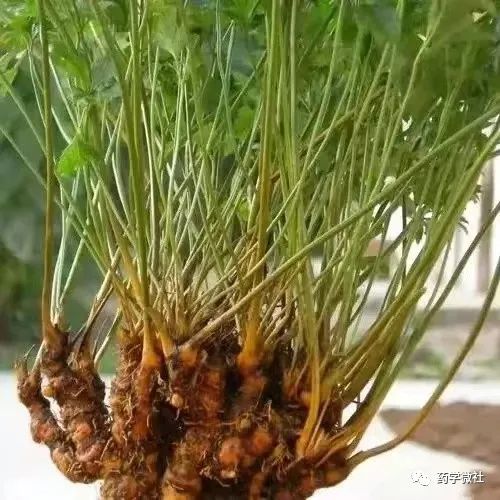
4. Harvesting
Harvesting of Huanglian is generally done before the first snowfall in late autumn. During harvesting, the entire plant is dug out, leaving the fresh rhizome. It should be dried directly, taking care to maintain moderate drying heat and frequent turning. When most of the moisture has evaporated, remove excess impurities, and the remaining part can be stored for medicinal use.

